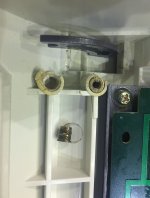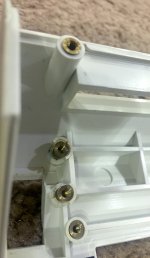I've an Ampere WS-1 laptop. The laptop shell is all plastic but the LCD screen has bulky metal hinges! As one would expect, the plastic cracked due to age and the hinges are no longer attached to the body. The picture below shows the base for one of the two hinges. I have to fix this of course, but am not sure how to proceed! I thought of pouring melted plastic in the holes and then reinsert the metal parts. I really would appreciate suggestions here.



